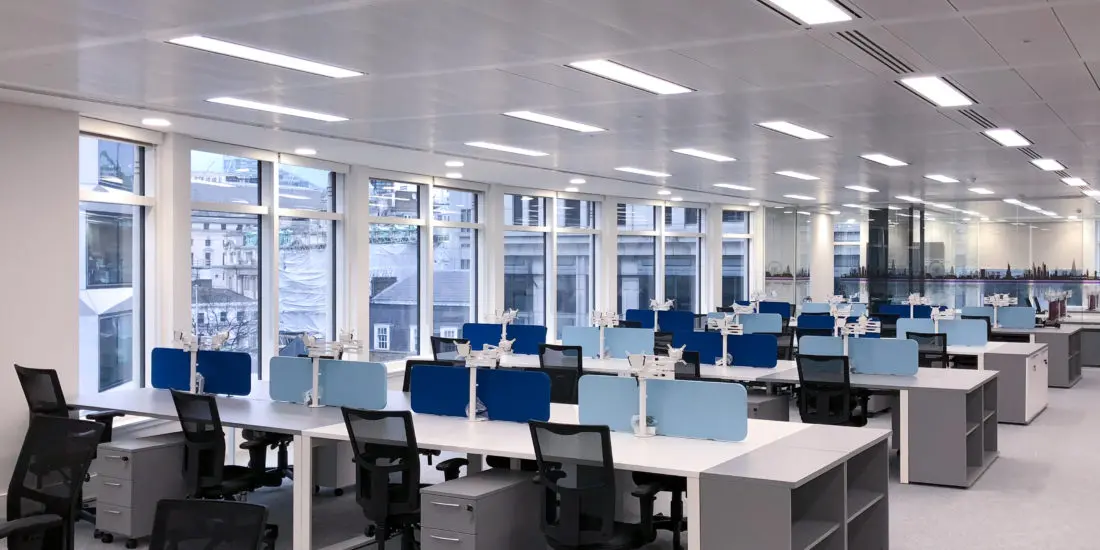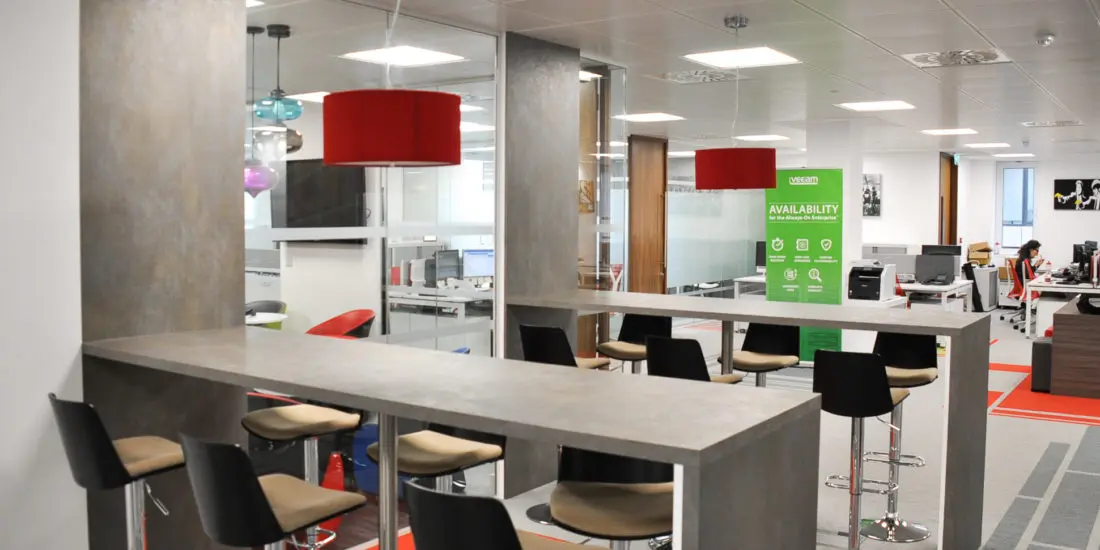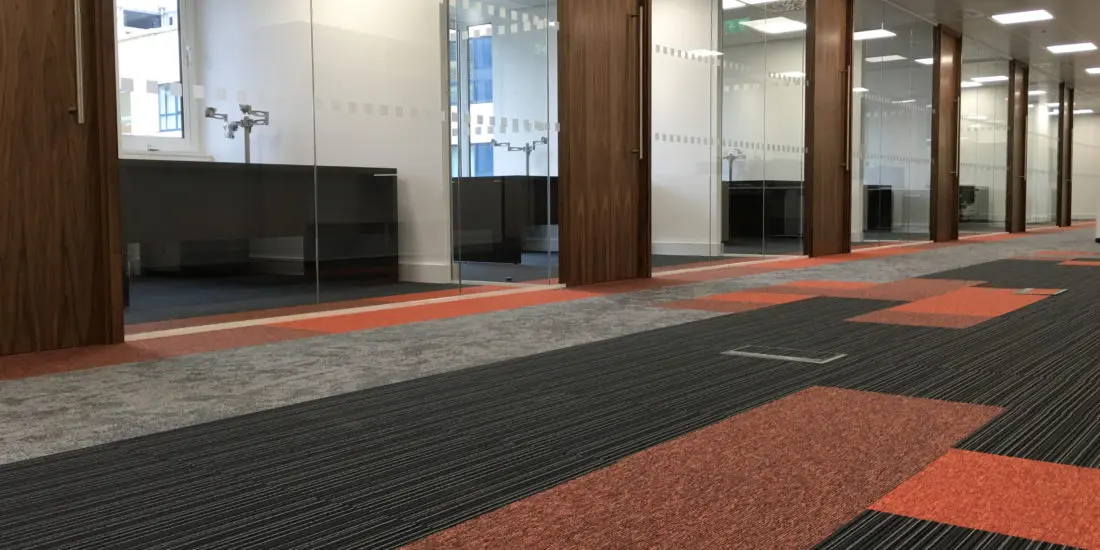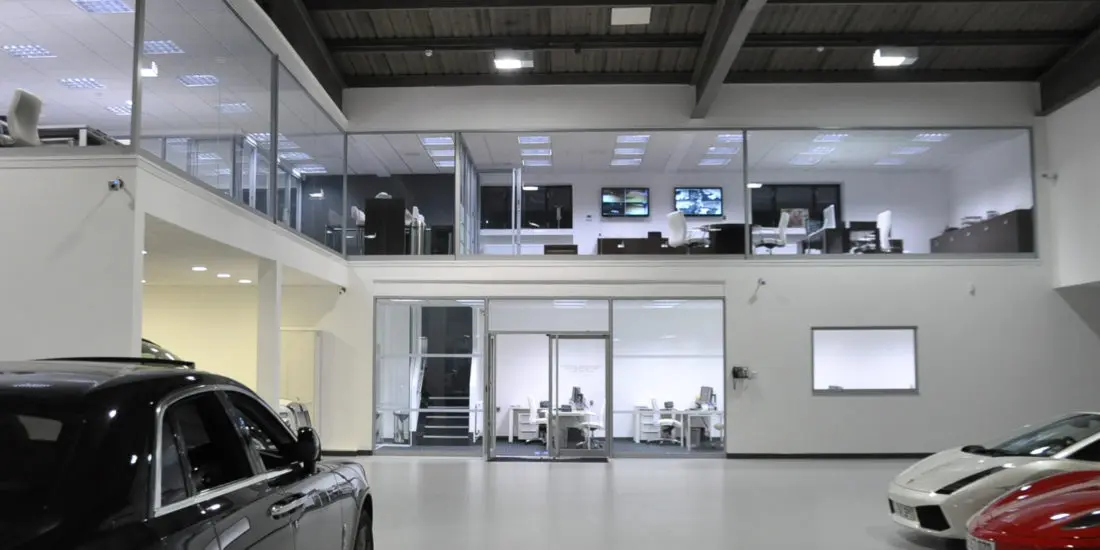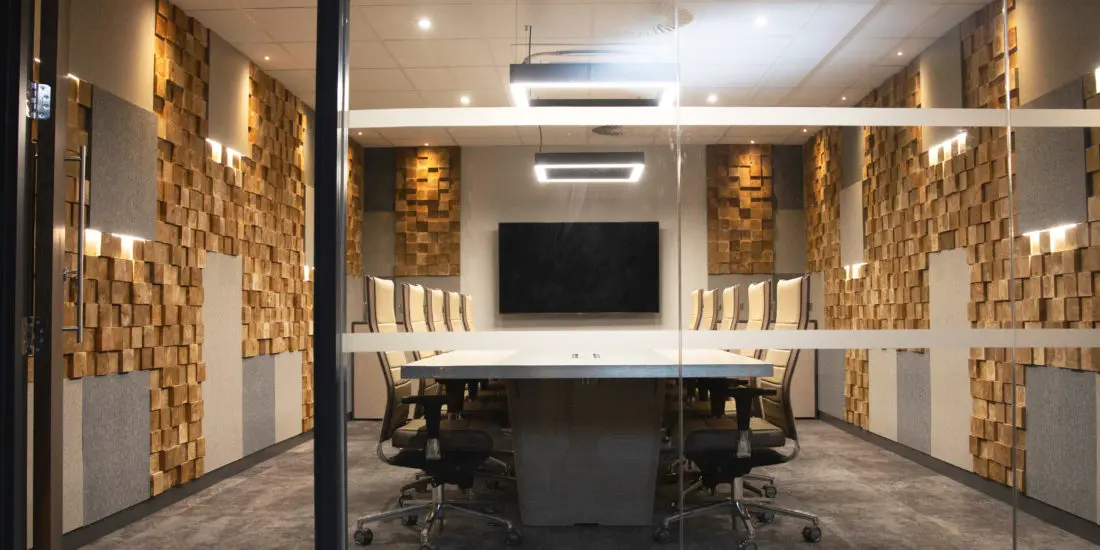Acoustic office partitions greatly reduce workplace noise that can
decrease productivity by up to 66%.
These modern solutions—ranging from
fabric-wrapped panels to modular glass dividers—convert intrusive sound waves
into heat or vibration.
In addition to their functional benefits,
they create aesthetically pleasing
environments that enhance employee well-being and operational efficiency.
Strategic installation of these
partitions allows businesses to balance collaborative areas with quiet zones,
addressing the £24 billion annual economic
burden noise places on UK companies.
The science behind acoustic wellness
reveals persuasive advantages for forward-thinking organisations.
The Hidden Cost of Workplace
Noise
While many businesses focus on tangible
expenses like rent and equipment, the impact of workplace noise remains a hidden
cost that silently erodes profits and productivity.
The numbers tell a sobering story—background conversations can slash task
performance by a staggering 66%, forcing employees to work longer hours just to
stay on track.
This noise impact translates into a £24
billion economic burden annually for U.S. businesses. Every time a telephone
rings or colleagues chat nearby, the mental reset button gets hit, creating workplace distractions that fracture
focus and drain creative energy. Further, the immediate productivity hit, the
ripple effect continues through increased turnover, higher absenteeism, and
escalating healthcare costs as employees battle stress-related illnesses. The true price of office noise? Far more
than most leaders realise. Installing acoustic ceiling systems can significantly
reduce these noise issues by absorbing sound and minimising echoes throughout
open office environments.
Understanding Sound
Absorption Technology
Sound absorption technology represents
the invisible shield between
productivity and chaos in today's workplace. This revolutionary approach
changes disruptive sound waves into
harmless heat or vibration through specialised acoustic materials strategically placed throughout open office environments.
These sound absorption heroes come in
various shapes—from fabric-wrapped panels to specialised foam and sustainable
recycled materials. Each type targets specific frequency ranges, creating an
all-encompassing sound management system.
Thicker materials generally capture more sound energy, while strategic
placement maximises their effectiveness.
When properly implemented, these
technologies liberate workspaces by reducing the mental fatigue caused by constant noise bombardment. The magic
happens when sound waves strike acoustic materials and simply disappear instead
of bouncing back to create echoes and amplification. They create not just
silence it's freedom for the mind to
work uninterrupted. Along with sound absorption solutions, acoustic glass options are available in
toughened and laminated forms to effectively enhance workplace focus while
maintaining visual connectivity.
Modern Acoustic Partition
Materials and Designs
How can modern offices achieve the
perfect balance between open-concept
collaboration and focused
productivity? Today's acoustic
materials offer solutions that blend functionality with style. Sound-dampening fabrics and specialised
acoustic panels now work alongside innovative designs like flexible textile softwalls and LED-integrated partitions to create
workspaces that liberate rather than confine.
Materials have progressed dramatically,
with HDPE textiles providing tear-resistant, water-resistant options that stand
up to daily use while repelling dust. Glass partitions maintain visual connection while controlling
sound, and recyclable components satisfy eco-conscious businesses. Frameless glass partitions offer unobstructed
views while reducing feelings of confinement in smaller workspaces. The most
exciting developments combine modularity
with aesthetics – accordion doors, telescoping sliders, and customisable
creative elements change ordinary dividers into statement pieces. These
innovative designs allow workspaces to adjust on demand, freeing employees from
the tyranny of fixed environments while maintaining acoustic comfort.
Measuring Noise Reduction in
Office Environments
When organisations seek to improve their
workspaces, measuring noise reduction
becomes a critical first step in creating productive environments. Modern acoustic assessment tools provide
concrete data about the invisible sonic terrain that shapes our daily
experience. Sound intensity metres
capture real-time decibel readings, while dosimeters
track personal exposure throughout the day, liberating workers from the
tyranny of unchecked noise.
The best noise measurement techniques
don't just identify problems—they clarify solutions. Acoustic software and noise mapping visualise trouble spots
where sound waves run rampant, often revealing that the chatty marketing team's
conversations travel much farther than anyone realised. With the threshold for
potential hearing damage starting at 85 dB, and typical offices hovering
between 45-65 dB, these measurements help strike the perfect balance between
energetic collaboration and focused
concentration.
Creating Privacy Zones
Without Permanent Walls
The modern workplace revolution has
finally found its champion in acoustic
office partitions, offering privacy
without permanence in today's fluid environments. These portable solutions
enable organisations to create flexible
spaces that serve varied work needs without construction complications.
Workers gain both acoustic sanctuary and visual
privacy through strategically placed partitions that can be reconfigured as
teams progress. The genius lies in their simplicity—these modular systems assemble without tools and move effortlessly to
support spontaneous collaboration or focused work.
Beyond functionality, these partitions
enhance real estate by converting open spaces into defined zones that respect
individual work styles. Placed near windows, they maintain natural light while defining limits. Sound insulation benefits make acoustic
partitions particularly effective in minimising noise transmission between
workspaces. The result? A workspace that breathes and adjusts, liberating
employees from noise without boxing them in—proving that freedom and structure
can brilliantly coexist.
The Psychological Benefits of
Controlled Acoustics
Outside the physical limits they create, acoustic office partitions offer deep psychological relief in today's
cacophonous work environments. Research reveals that 60% of workers experience
stress in noisy spaces, leading to
mental fatigue and diminished focus—problems that sound management directly addresses.
The concept of acoustic wellness extends past mere comfort. Sound masking technologies have proven to reduce anxiety and create
psychologically safe workspaces where employees can thrive. The altered sound
environment allows for improved privacy during sensitive conversations while
simultaneously lowering stress amounts.
Studies consistently show that workers in
sound-controlled settings report improved mental
health and decreased reliance on personal coping mechanisms like
headphones. This liberation from noise doesn't just feel good—it translates to
measurable improvements in both concentration and emotional well-being.
Implementing acoustic solutions is a key
component of workplace consultancy that aims to enhance
staff wellbeing and operational efficiency through strategic assessment of
space utilisation.
Case Studies: Businesses
Transformed by Acoustic Solutions
Success stories from leading businesses
demonstrate the groundbreaking power of acoustic
office solutions in real-world environments. These workplace alterations
begin with thorough site surveys
where specialists identify specific noise challenges unique to each space.
Companies implementing Rw 53 dB
partitions in meeting rooms report dramatic improvements in confidentiality and focus, turning
previously unusable spaces into productivity hubs.
One standout acoustic success story
features a tech firm that integrated smart
acoustic panels with ceiling-mounted baffles, creating vibrant noise
management whilst maintaining an open, light-filled atmosphere. Employees raved
about both the aesthetic appeal and functional benefits. Another showcases a
healthcare provider whose acoustic partition installation not only improved patient privacy but also reduced staff
stress measures noticeably. Many organisations enhance their noise control by
combining these partitions with acoustic ceiling tiles that are specifically
designed to reduce noise and improve sound quality in office environments.
Post-installation sound testing
verified these extraordinary improvements, proving that thoughtful acoustic
design delivers tangible business advantages.
Installation and Maintenance
Considerations
Ensuring successful acoustic partition installation requires careful attention to
detail from preparation through completion. The process begins with evaluating
the existing acoustic environment and preparing the opening correctly to
prevent sound leaks. Effective
installation techniques include precise
fitting of partitions, proper
sealing of gaps, and integration with ceiling systems to eliminate flanking
paths where sound might escape.
Professional installers know that material selection greatly impacts
performance—solid cores and acoustic interlayers deliver superior sound
reduction. They'll also consider how the partition interacts with surrounding
elements like floors and furnishings.
Once installed, regular maintenance strategies become essential. Periodic
inspections identify worn seals or positioning issues before they compromise
acoustic integrity. Keep in mind: even the highest-rated STC partition fails if
gaps develop or mechanisms wear down. Your investment in proper installation
and upkeep pays dividends in sustained
workplace tranquillity.
Balancing Collaboration and
Concentration in Open Offices
The properly installed acoustic partition represents only half
the solution for today's developing workplace. Modern offices must strike a
delicate balance between team
collaboration and individual focus—a
challenge that demands thoughtful planning.
Effective collaboration strategies now
incorporate zoned environments where
teams can freely exchange ideas without interfering with colleagues deep in
thought. Many forward-thinking companies create designated quiet areas alongside lively collaborative spaces,
recognising that creativity flourishes in both settings.
Focus techniques have progressed past
noise-cancelling headphones. Employees now benefit from flexible work arrangements that acknowledge different cognitive
styles. Electronic whiteboards and collaborative software enable teams to
maintain connections while respecting personal space limits.
The most successful workplaces aren't
just quiet or loud, they're responsive,
adjusting to the rhythm of their inhabitants' shifting needs throughout the
workday. Research indicates that top performers spend approximately 45% of
their work time engaged in collaborative tasks, making strategic office design
essential for maximising productivity.
Conclusion
In the orchestra of modern workplaces, acoustic partitions guide a silent revolution. Like invisible guardians, they shield focus from the chaos of collaboration, altering office environments into productivity oases. The evidence speaks volumes—businesses that invest in sound management nurture not just quieter spaces, but happier minds and stronger bottom lines. As the walls between isolation and interaction blur, one truth echoes clearly: sometimes the loudest statement is the absence of noise.







